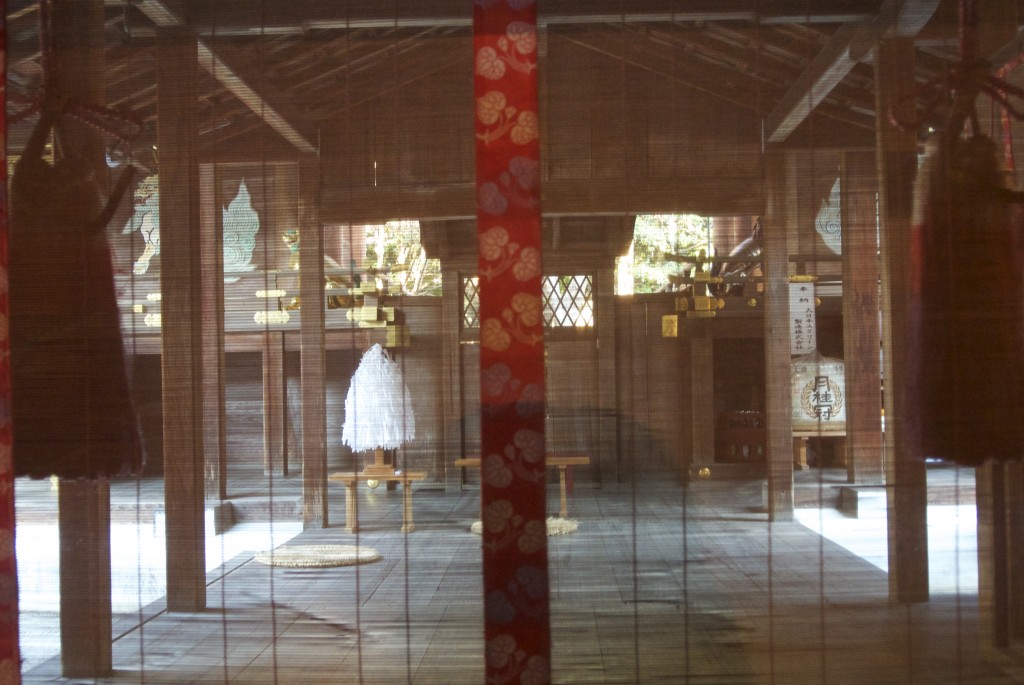
Kamigamo's sanctuary with a painted komainu visible on the left
Kyoto’s Kamigamo Shrine takes the spotlight this month, since it’s co-hosting the Aoi Festival with its sister shrine Shimogamo.
The Aoi Matsuri is the oldest of Kyoto’s festivals, dating back to around 544 according to Nihon shoki. The name refers to Hollyhock leaves, once thought to have protective power, and the festival originated in appeasement of the Kamo deity at a time of bad weather which had ruined the crops.
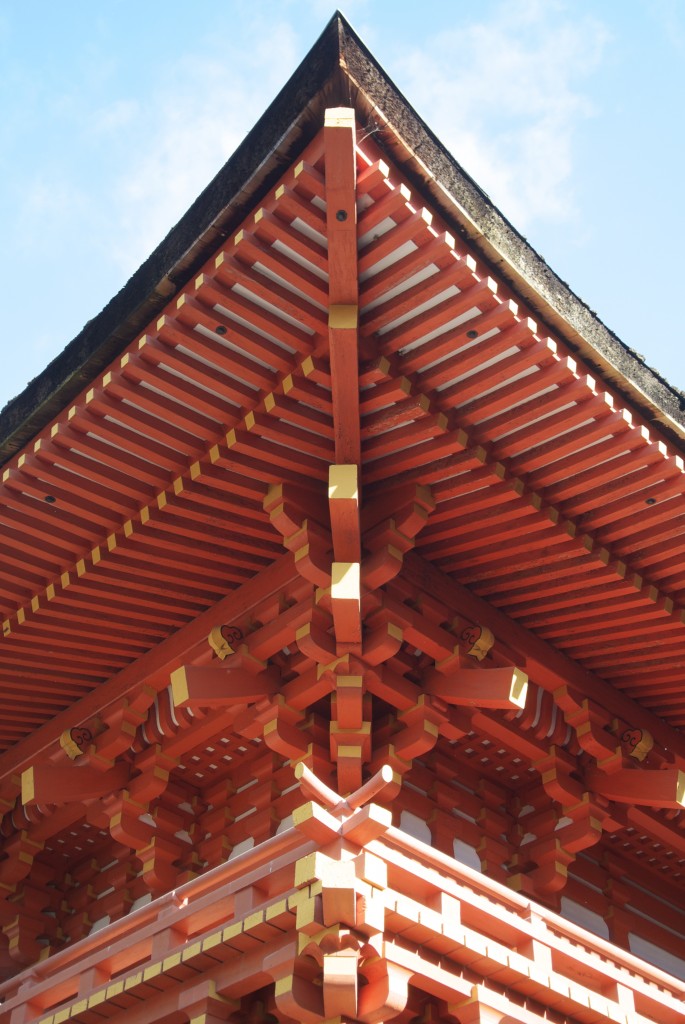
Thanks to the shikinen sengu cycle of renewal, the shrine buildings are in excellent condition
The main event takes place on May 15, when participants in a parade wear hollyhock leaves on their Heian-era costumes. Before that there are rituals on May 12 at both Kamigamo and Shimogamo to welcome the kami and renew the spiritual power of the shrines.
Here follow some distinctive features of Kamigamo, culled from Joseph Cali’s guide to Shinto Shrines (Univ. of Hawaii Press).
1) Enshrined is a deity of thunder, Kamo Wake-ikazuchi, who first descended on the sacred Koyama hill towards which the shrine is aligned. The deity is the grandson of the Kamo clan founder, who was an ally of the Yamato clan and manifested as yatagarasu, the three-legged crow.
2) The shrine not only has a Honden (sanctuary), but a Gonden which is identical and stands opposite. This unusual feature is explained as ‘a spare’ should the kami need it. It’s used every 21 years when the shrine undergoes renewal in the shikinen sengu tradition (it used to involve complete rebuilding as at Ise, but nowadays consists of repairs). On the front wall of the Honden is a large painting of a komainu (see pic above), and the Gonden has a ‘shadow komainu‘.
3) Before the head priest reads out prayers, two priests announce the intention to the deity’s mother, Princess Tamayori, who is enshrined in a subshrine called Kataoka Jinja.
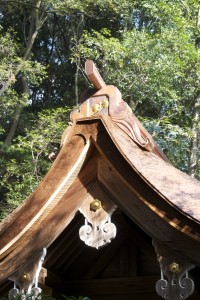
Sanctuary roof made of overlapping bark with the shrine's aoi (hollyhock) emblem
4) As at Shimogamo, there’s a special platform called the hashidono for the annual visit of the imperial messenger, who uses it to read out the official petition during the Aoi Festival parade on May 15.
5) There are two sand piles in the main compound with a sprig of pine at the top to represent the tree into which the deity first descended on the Koyama hill. (See photo below.) The two piles are thought to be a reference to yin-yang, as the shrine priests were once the foremost experts in onmyodo (Way of Yin-yang). The Merlin of Japan – Abe no Seimei (921-1005) – was taught by shrine priest Kamo no Tadayuki.
6) The shrine has 34 structures set on 170 acres. Two streams flow through the grounds, providing a sense of vitality and coolness, with ten bridges spanning them. The streams join to form the Nara no Ogawa where ablutions once took place. A poem written about it was included in the famous Hyakunin Ishu collection – “In the evening/ when the wind stirs the oaks/ at the brook of Nara/ the ablutions are/ the only sign of summer.”
7) From 810 to the early thirteenth century unmarried female relatives of the emperor served at the shrine as Saiin and maintained ritual purity. This was in the tradition of the undefiled shamaness of antiquity, known as miko. In the Aoi Festival her role is played by a young female from a good family, known as the Saio-dai.
8) Horse racing in Japan is said to have originated at the shrine, for in medieval times it formed one of the pre-events for the Aoi Festival. The horse-riding events to entertain the shrine’s kami were an occasion when Kamo clan members could show off their horse riding skills.
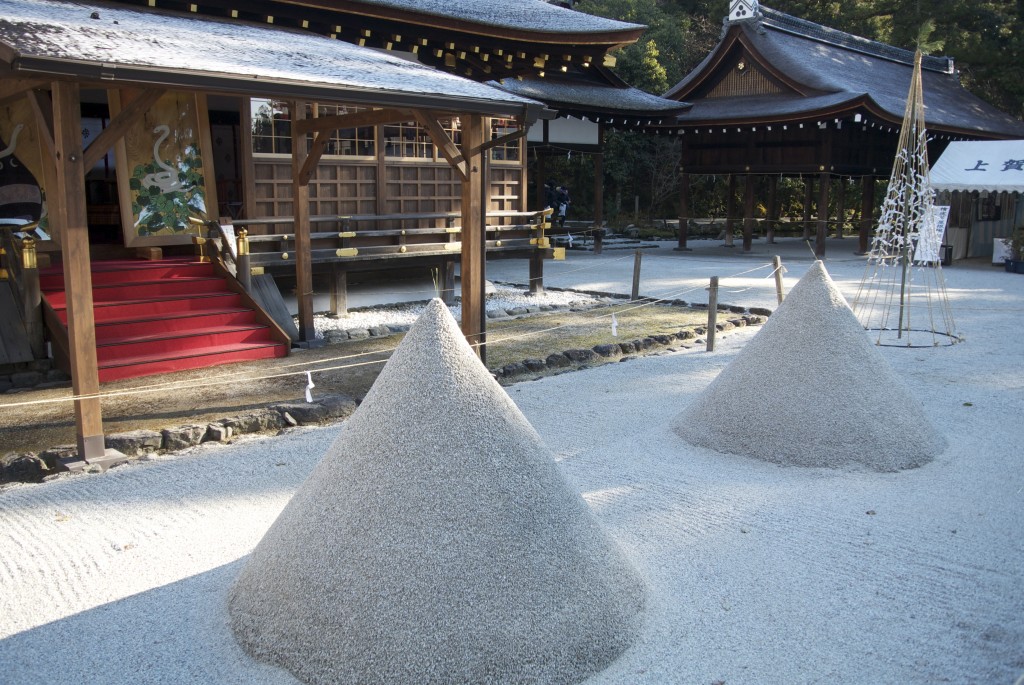
The characteristic sand mounds of Kamigamo, with sprigs of pine at the top to represent the himorogi vehicle into which the shrine kami descended on the sacred hill of Koyama
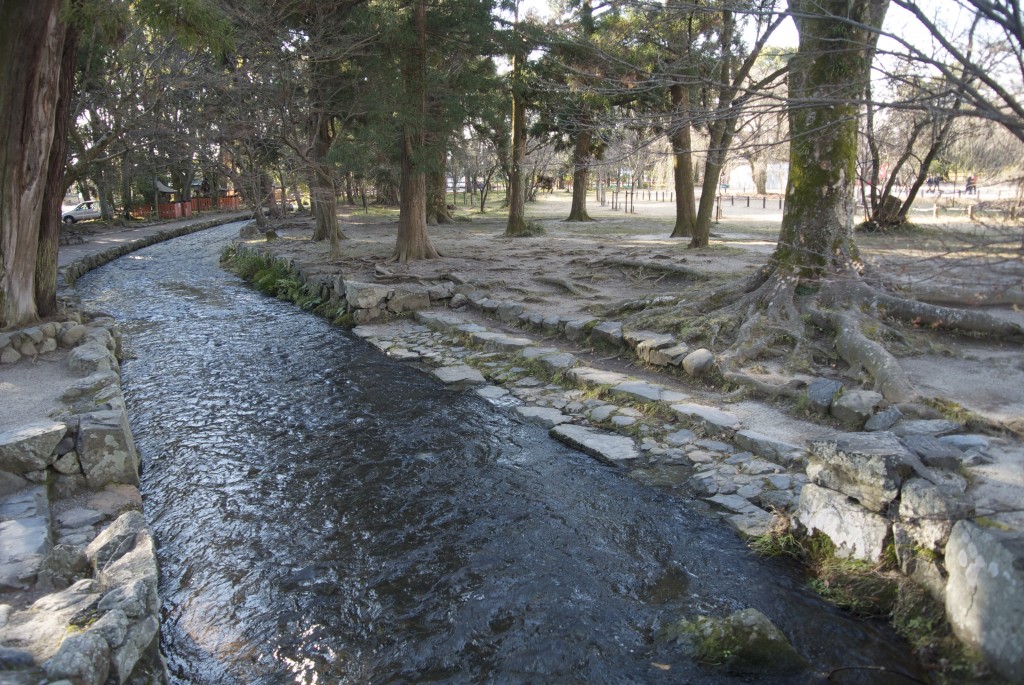
The Nara River flowing through the grounds, where once ablutions were carried out
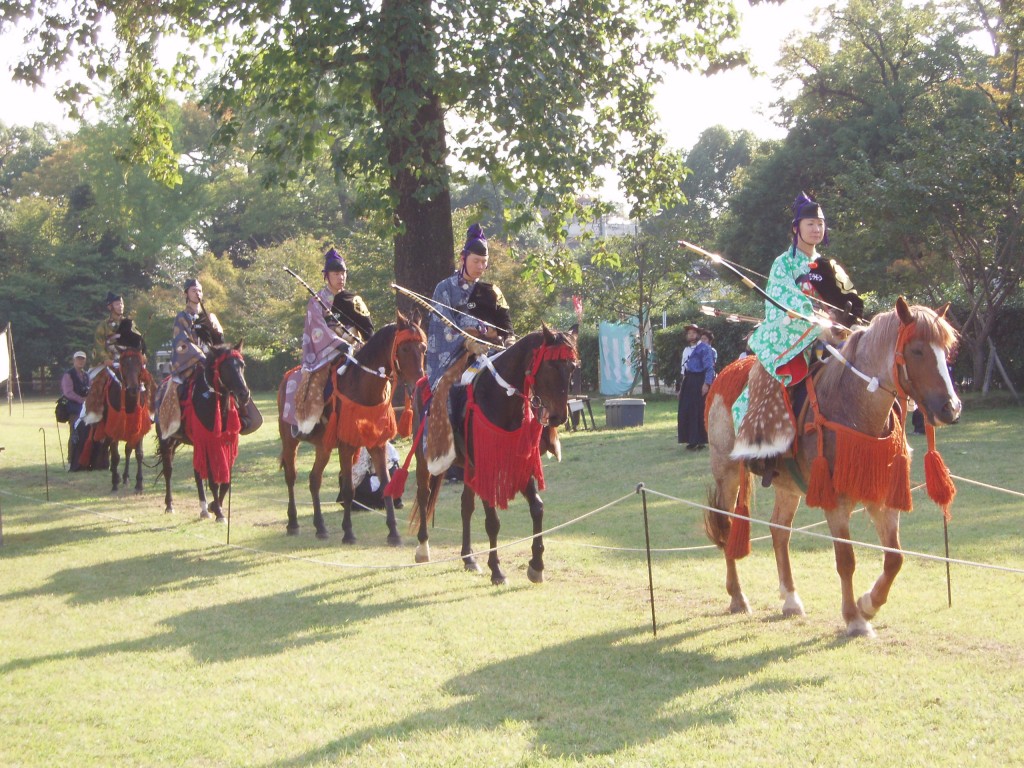
The Kamo clan were fearless horse riders, and traditional horse events still play a large part at the shrine. It's even said that horse racing in Japan originated here.

Leave a Reply